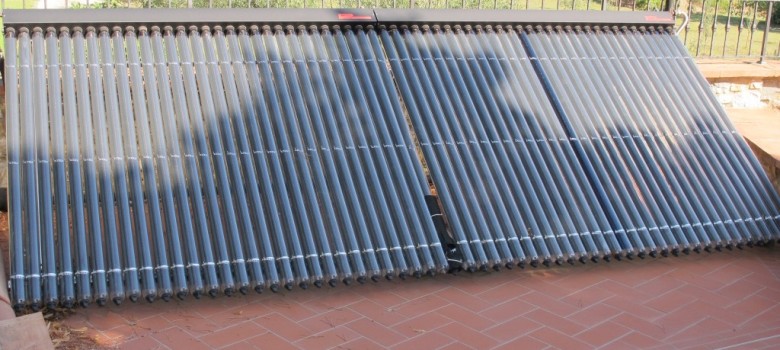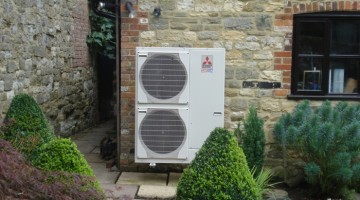
UPDATE: The Feed-In Tariff is now closed for new applications. To find out about the new scheme designed to replace it, click here.
The average energy bill in the UK is now about £1350, this is despite the fact that underlying oil prices have tanked – the energy companies don’t feel the need to pass on these savings to consumers.
As time goes on, it seems inevitable that energy prices will continue to go up – from 2007 – 2015 they have gone up 10% per year, and unfortunately we expect this to continue!
You can read more about why the UK energy prices are likely to continue rising here, but put simply we lack the supply (i.e. power plants) to meet demand. If we had a particularly cold winter we would run out of gas and then we would be at the mercy of the Middle East, Russia and the US – not an enviable position at all!
Many people are therefore beginning to look at renewable energy as a means of reducing the impact of rising energy bills. If you can produce hot water from the sun, a heat pump or even a biomass boiler obviously that lowers your demand on drawing gas from the grid. Likewise solar panels on the roof or a wind turbine in the garden can produce electricity, lowering the amount of electricity you need to draw from the grid.
Renewable heating or renewable electricity production?
The question we ask here is given the choice, should you invest in a new renewable heating system or a system that produces electricity?
Well first, lets take a look at the options for both – for a renewable heating system you can install a solar thermal system, a heat pump (air or ground) or a biomass boiler.
In terms of electricity production you are slightly more limited (at least as a viable solution to install at home!) to Solar PV panels, wind turbines or micro hydroelectric.
Obviously the technologies themselves might be the limiting factors, if you don’t have a roof you can’t get solar PV or solar thermal. Likewise if you don’t have access to a running water supply then Micro Hydroelectric is going to be a bit of a waste of time.
Hot water accounts for more of our energy bills than electricity
But say that you could install any of them, then on the face of it renewable heating seems your best bet – producing hot water to supply your home with heating and hot water. There is an even stronger case for renewable heating systems if your existing heating system is on its last legs. The reason that renewable heating system should be the best investment is down to the amount of heating that typically occurs in the home. Of the £1350 average energy bill about 70% of this covers the cost of gas – i.e. the fuel that runs the boiler and produces the hot water, therefore purely on this 70% : 30% ratio the case to invest in a renewable heating system is higher.
Before we look at the financial implications though it is worth considering that of all the gas used in the home, 80% is used during the winter months. Therefore while solar thermal will produce all your hot water from May – September, when you need it to step up to the plate it unfortunately won’t do so!
Likewise, air source heat pumps are a fantastic idea, they convert 1 unit of electricity (at 10p) into 3.5 / 4 units of useful heat when you look at the annualised figure (known as the SPF). If you look closer at the numbers though, during the winter months this can drop to one unit of electricity producing just 1.5 units of useful heat, so that means for each unit of useful heat it is costing you 7 pence. Compare this to gas at 3.5p per kWh then unfortunately the numbers don’t stack up.

So that leaves ground source heat pumps or biomass boilers in the renewable heating camp versus solar PV / Wind / Micro-hydro electric in the electricity production camp – so let’s try and refine the argument further.
Well first it is worth pointing out just because you are producing electricity doesn’t mean you can’t use it to produce hot water. Unlike renewable heating that is only ever going to provide hot water, solar PV and the other renewable electricity techs can all produce hot water as well as running your appliances. This is normally done via an immersion unit on a hot water tank that is powered only when your home is making more electricity from the renewable system than the home is consuming (e.g. with lights on and the fridge running). These power diverters ensure that you use all the electricity you produce in the home and don’t export any back to the grid.
The fact that you can produce both electricity and hot water from solar PV, wind turbines and micro hydroelectric is a huge advantage, but do remember that the amount of electricity derived from solar panels is far lower during the winter months, so you are going to be stuck with the same issue that you are still going to need to use lots of mains gas during the winter to power your heating.
At this point though lets be realistic – how many people have rivers running through their land that they can install a micro hydroelectric system on? That is not to belittle the technology – if you do have a river at the end of the garden then it is perfect – especially since flow rates in the winter tend to be higher than during the summer months so they will be performing best when you need to produce all that hot water, and also unlike solar PV, it will produce electricity as long as the river is running, which means typically you are still going to be producing electricity during the evening.
So that leaves us with just ground source heat pumps and biomass boilers in the renewable heating camp versus solar PV / Wind in the electricity production camp. This is where the numbers need to be considered.
Typical Cost of these systems
Typically the following costs can be attributed to each of the 4 renewable technologies above:
Solar PV – 4kW system, £6000
Wind turbine – 4kW system, £4,000
Ground source heat pump – £20,000 (if vertical bore holes)
Ground source heat pump – £14,000 (if horizontal pipework)
Biomass boiler – £9,000
Obviously on the face of this, the cheaper technology is better, but this fails to take into account the Government subsidies. There are two types of Government subsidy – Renewable Heat Incentive for the techs that produce hot water and the Feed-in tariff for the techs that produce electricity.
You can learn more about both of these schemes by clicking on the links below:
>>> Learn more about the RHI <<<
>>> Learn more about the FIT <<<
Put simply though, these schemes are designed to incentivise the investment in these technologies, but while the RHI just covers the install cost of the renewable heating system over the 7 years it gets paid, the Feed in tariff is paid out over 20 years and more than covers the cost of installing the system – in fact it could cover 2-3 times the cost of it – so the feed-in tariff is far more generous.
For this reason if you have to weigh up whether to install a renewable heating system or a renewable electricity production system then we would probably go for the electricity production systems. On the whole this would normally be solar PV panels on your roof, but if circumstances allow then you could look to invest in micro hydroelectric or a wind turbine.











Good informative commentary on a complicated subject. The conclusion that electricity generation using solar PV arrays is an interesting option especially as the cost of these panels is falling and performance/life expectancy is rising. The only ‘bug in the ointment’ is the uncertainty over the durability of the single inverter unit schemes. Having to shell out £1000 after a few years is not an attractive proposition. The obvoius next step must be to combine say an air source heat pump with the PV source and seek to boost the heating effect by a factor of say 3.5 over the purely electric heating effect from the panels themselves. In this way by sizing the ASHP to say 2.5kW electricity input to the solar panels o/p of say 3kWe would enable heating demandsand hot water for 6months per year to be achieved; thereafter the domestic boiler heating boiler would take over the heating loads as days get darker and weather colder.
It appears to me that we should be prepared to embrace several sources in order to keep our homes warm.
Thanks Peter, I take your point on the inverters. To be honest, most PV systems we are installing at the moment have micro-inverters for each panel. One benefit is that they should match the lifespan of the solar panels (so 25 years or more) simply because the load going through them isn’t as strong. The other benefit is that the solar panels all act individually from one another so you maximise return (normally the panels going through a single inverter act at the level of the worse performing panel).
I agree though – clearly a mix is the answer! Hopefully the new Government doesn’t completely kill an industry still in its infancy!